

'Irons Curtains of the First Kind'


the 'Wire of Death' along the Dutch-Belgian Frontier
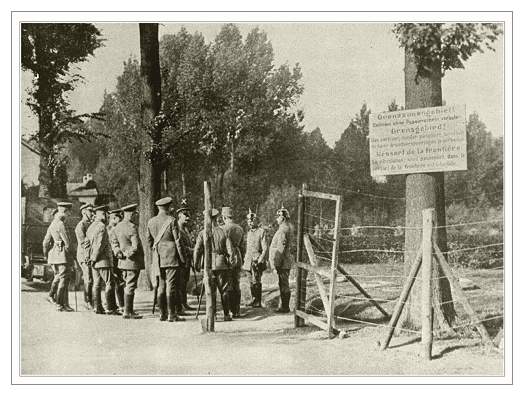
German officers on inspection along the electrified fence.
There has been more than one Iron Curtain erected in Europe during the 20th century, the most infamous being that which seperated the Soviet dominated eastern European satellite countries from West Europe. During the Great War the first iron curtain of sorts, an electrified wire fence seperating occupied Belgium from the neutral Netherlands was constructed by the Germans to prevent Belgians from escaping the country and joining the Belgian Army.
From a modern day point of view, this electrified fence, called 'the Wire of Death' during the Great War, was a primitive construction indeed, though it inspired fear and loathing amongst the Belgian population at the time. It was some 300 kms long, built more or less along the Belgian-Dutch border (but not into Belgian enclaves in the Netherlands, under German pressure, Dutch authorities built their own, none-electrified fences around the enclaves to discourage the construction of radio-transmittors). It consisted of three concentric fences of barbed wire strung on wooden posts to a height of about 2 meters. The inside fence consisted of 5 to 7 wires, at least 3 of which were alternatively put under an electric current of about 2000 volts, a more than lethal amount. There were guard posts all along the fence with regular patrols checking the perimeter. Signal houses with warning lights and bells warned of any power breakage. Power was supplied by a series of generators that could work independently of each other, allowing for repair work or the reclamation of electrocuted bodies, human or animal.
It is estimated that some 30 000 to 35 000 Belgians passed safely through the wire and enlisted in the Belgian Army after regaining France or England by way of the Netherlands. An undetermined number of Allied soldiers also escaped by this route as did Russian POWs used as forced labor in Belgium and German deserters. Some 500 to 3000 people (including careless German soldiers) are estimated to have died as a result of electrocution. Not all of these were escapees however, as many people, especially those in rural areas were not yet acquainted with the use and dangers of electricty.
The idea for the electrified fence is said to have originated from a German Hauptmann Schütte, though the concept of electrifying barbed wire had already been used during the siege of Antwerp by the Belgian Army, to no great effect it must be said. Construction was started in June 1915 and work was completed by August of the same year by German engineer troops working along with Belgian and Russian conscript laborers. The building materials for the fence were requisitioned without payment.
Just as during the Communist period, in 1915 German soldiers guarding the fence had standing orders to shoot to kill and instances are known in which successful escapees were shot while on Dutch territory but still within rifle range. Nevertheless large numbers of escapees and smugglers managed to safely cross the fence. There were various escape and smuggle networks at work. It was because of the help she gave to soldiers escaping by this route that nurse Edith Cavell was executed in 1915 (see the section on Nurse Edith Cavell).
There were various methods of passing the fence. Hollow barrels and windows without glass were stuck between the electrified wires, allowing escapees to pass through unharmed. Some escapees were known to have (tried) pole-vaulting over the wire, while others used wooden ladders or tables set in porcelain cups as insulation, in order to jump over. In the later period of the war, folding windows and insulated wire cutters were also used. It was also possible to obtain forged papers or even to bribe guards, though such methods were not very reliable. Digging a tunnel or ditch under the fence was a safer but more arduous manner of escaping. Sometimes complicated constructions using buckets filled with water and copper wire was used to short-circuit sections of the fence, a method not without danger. Escapees are also known to have simply rammed heavy carts or wagons into the wire.
After the war, the electrified fence was quickly dismantled, either by local Belgian authorities or by private citizens, usually farmers who used the wire and poles to fence off their own fields. Instances also occured in which guard houses and generating sheds were destroyed and burned down by angry and vengeful groups of Belgians. During the final days of the war, just before the Armistice when signs of revolutionary fervor was rife amongst German soldiers, several sections of the wire was stormed and torn down by deserters.
Today few, if any remains are left to see. A small exhibit containing a length of wire along with a folding escape window and accounts of escape routes and smugglers, can be seen in 'De Poldermuseum' in Lillo Fort, north of Antwerp. A small monument to victims is located in Sippenaken village. If one knows where to search, with a bit of skill and diligence it is apparently still possible to find remains of glass insulators at various more isolated locations.
Here is a collection of photos, the first four of which were published as postcards, presumably after the war.
- For a more detailed and excellently illustrated study of the 'Wire of Death' see the Dutch language article 'Het Eerste 'Ijzeren Gordijn' ?' by dr. Alex Vanneste, in the following publication : 'Het Tijdschrift van Dexia Bank' issue no. 214 / 2000/4.
- Information on obtaining issues : Dexia Bank / Dienst Publicaties RC 6/3 / Pachecolaan 44 / 1000 Brussels / Belgium / tel : 02/222 45 38 / fax : 02/222 56 74 / e-mail : [email protected]
Postcards of the 'Wire of Death'
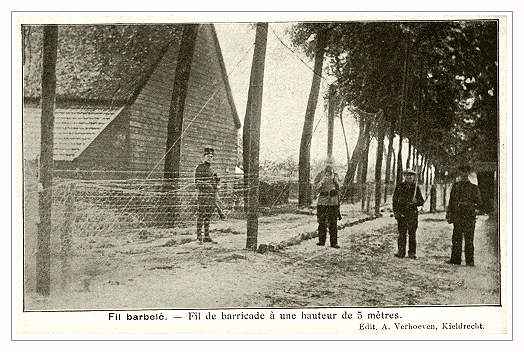
from left to right : Dutch Soldier, German guard and Belgian farmers/laborers
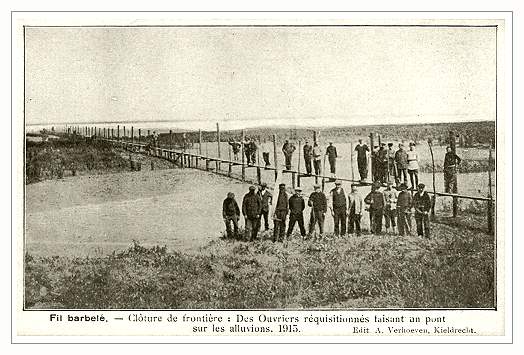
Constructing the fence in a flooded area.
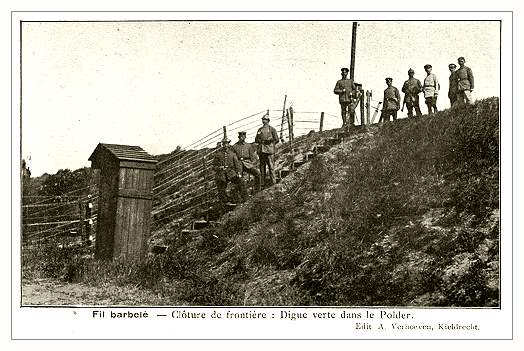
A small guard house along a dike.
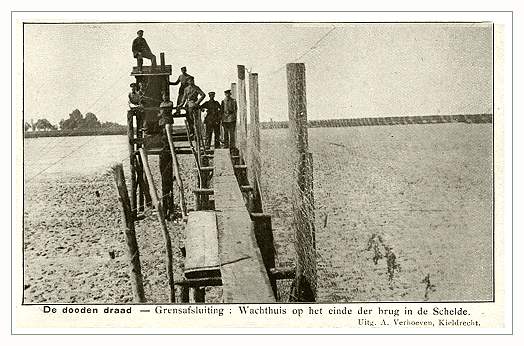
The fence extended into rivers and streams. This is a view of a guard house on the river Scheldt.
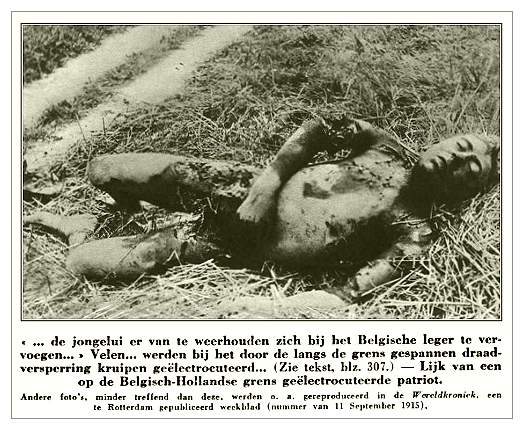
A grim photograph of an electroctued would-be escapee.
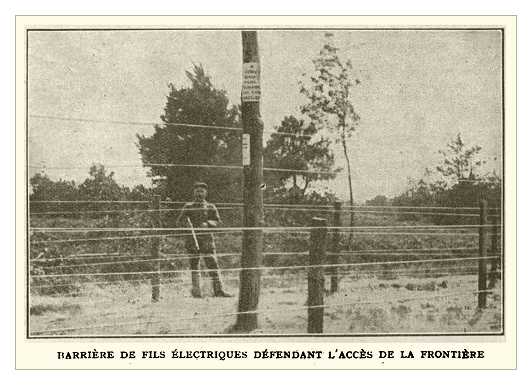
a photograph from a French newsmagazine ('Le Pays de France')